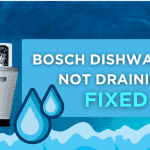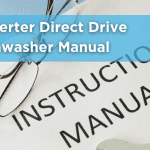Table of Contents
Why Do You Need to Drain Your Pool?
There are several reasons why you may need to drain your pool:
- Water chemistry imbalance that cannot be corrected
- Algae infestation or murky water
- Repairs or resurfacing required
- Winterizing the pool in cold climates
- Routine maintenance after years of use
Draining your pool properly prevents damage to the pool liner, pump, and plumbing system.
Types of Pumps to Drain a Pool
Before you start, it’s essential to choose the right pump type:
1. Submersible Pump (Recommended)
- Best for fast and efficient draining
- Can remove water down to a few inches
- Requires an electrical outlet nearby
2. Pool Pump (Filter System)
- Uses the pool’s built-in filtration system
- Works for partial draining but is slower
- Should be used with caution to avoid damaging the pump motor
3. Siphon Method (Backup Option)
- Uses a garden hose to create suction
- Works for small pools or minor water removal
- Slow and not ideal for full draining
How to Drain a Pool Using a Pump: Step-by-Step Guide
Step 1: Gather Your Supplies
Before starting, you will need:
- Submersible pump or pool pump
- Discharge hose (long enough to reach the drain area)
- Electrical extension cord (if needed)
- Bucket or towels (to catch any leaks)
- Garden hose (for cleaning after draining)
Step 2: Turn Off the Pool Equipment
- Switch off the pool pump and filtration system.
- Unplug any electrical connections to prevent damage.
Step 3: Set Up the Submersible Pump
- Place the submersible pump in the deepest part of the pool.
- Attach the discharge hose to the pump outlet.
- Extend the hose to a safe drainage location (sewer drain, street curb, or lawn away from the house).
Step 4: Start Draining the Pool
- Plug in the submersible pump and turn it on.
- Monitor the water flow to ensure it’s draining properly.
- Check the hose placement to prevent flooding.
Step 5: Monitor the Water Level
- Keep an eye on the water level as it drains.
- If using the pool pump, switch off the system before air enters the lines.
- If using a submersible pump, allow it to remove as much water as possible.
Step 6: Remove the Last Few Inches of Water
- Use a wet/dry vacuum or a bucket to remove remaining water.
- Some pumps may not be able to drain all the way to the bottom.
Step 7: Turn Off and Remove the Pump
- Once the pool is fully drained, turn off the pump.
- Disconnect the discharge hose and remove the pump.
- Store the pump in a dry place to prevent damage.
Step 8: Clean the Pool Surface
- Scrub the walls and floor to remove algae or dirt buildup.
- Rinse the pool using a garden hose before refilling.
Where Should You Drain Pool Water?
- Sewer Drain (best option, check local regulations)
- Storm Drain (only if allowed in your area)
- Lawn or Garden (if chlorine levels are low)
- Street Gutter (only if permitted by your city)
Check with your local water authority before draining large amounts of water.
How to Prevent Pool Damage When Draining
- Never drain a pool on a hot day – high temperatures can crack the pool liner.
- Avoid draining below groundwater level – it may cause structural damage.
- Do not leave the pool empty for too long – it can weaken the pool’s foundation.
- Use a pool cover after refilling to maintain water quality.
When to Call a Professional
If you’re unsure about draining your pool, call a pool professional for help. Seek assistance if:
- Your pool has a vinyl liner (can shrink if emptied).
- You need repairs or resurfacing.
- There is a risk of pool popping due to high groundwater levels.
Final Thoughts
Draining a pool using a pump is the most efficient method to remove water safely. Whether you use a submersible pump or the pool’s filtration system, following the correct steps prevents damage and ensures a smooth process. Regular maintenance and proper draining techniques help prolong your pool’s lifespan and keep it in top condition.
By following these steps, you can successfully drain your pool without any hassle!
Frequently Asked Questions (FAQs)
1. How long does it take to drain a pool using a pump?
- A submersible pump can drain a pool in 6-12 hours, depending on size.
- A pool pump may take 24+ hours.
2. Can I drain my pool with a garden hose?
Yes, but it’s very slow and only works for small pools.
3. Will draining my pool damage it?
If done incorrectly, yes. Avoid draining in hot weather or when the groundwater level is high.
4. Do I need to drain my pool every year?
No, most pools only need full draining every 3-5 years, unless repairs are needed.
5. How do I refill my pool after draining?
Use a garden hose or contact a water delivery service for faster refilling.
Following these steps will help you drain your pool safely and efficiently!




